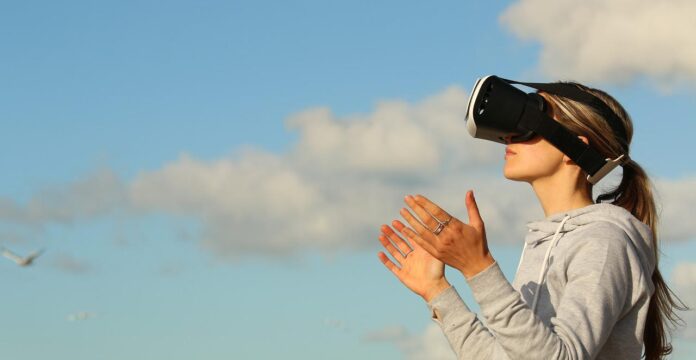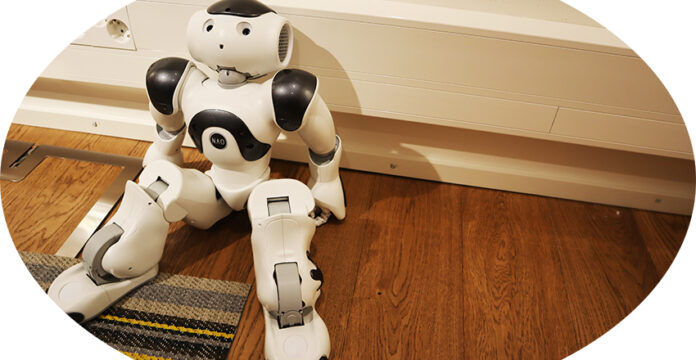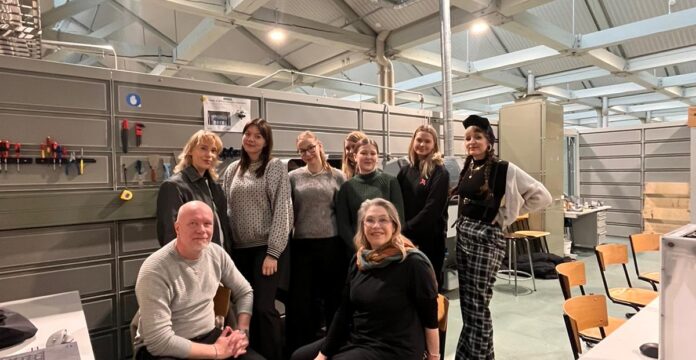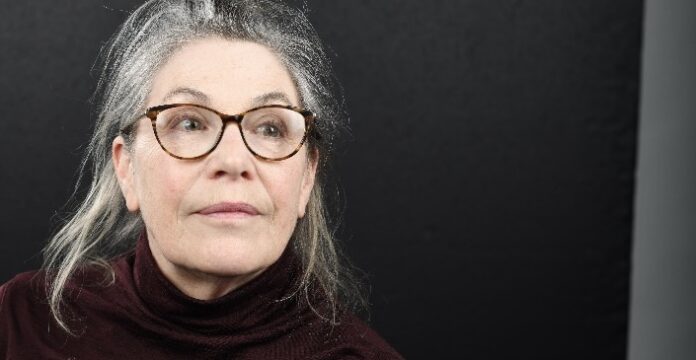Authors: Kunal Menon, Sergiu Petrut, Bogdan Rudnevskyii, Mykola Zhabko, Gonzalo Araya Jaramillo, Ali Dulaimi, and Rebekah Rousi
In November this year we had the pleasure of being a part of the XR Ocean Hackathon focusing on the future of education. The event was lively and inspiring. In particular, there were some things and some people who especially caught our attention. Team VAMK’d came into our VME home and stole our hearts. This team spent the days leading up to the event, as well as all the moments during it, frantically learning the technology in order to built their solution Bee-R from the ground up. Now, we want to share their story.
When Kunal Menon (India), Sergiu Petrut (Romania), Bogdan Rudnevskyii (Russia), Mykola Zhabko (Ukraine), Gonzalo Araya Jaramillo (Chile), and Ali Dulaimi (Iraq) decided to enter the XR Ocean Hackathon they wanted to make a difference. They had been looking for challenges to engage in after their prior success at this year’s NASA Space Apps Hackathon. With the urgency of taking environmental action in mind, they began to deliberate over how applying extended reality (XR) in education could really change the world. Knowledge is power, particularly the power to control. Through knowledge, humans can determine the directions towards which they wish to shape the world. And, through good will and intention they (we) can do it!
One thing that every now and then is publicized in relation to environmental crises has been the decline in bee populations (Potts et al., 2016). There are approximately 20000 identified species of bees, and these have all co-evolved with flowering plants (Patel et al., 2021). Not only do bees and flowering plants have a symbiotic evolutionary history, but the nature and nurture of human societies have also depended on the often unseen work of bee populations. In fact, bees pollinate above 90% of the top 107 global crops, and provide approximately USD$3251 per hectare for insect-pollinated crops (Kleijn et al., 2015). In a recent study by Patel and colleagues (2021), bees were identified to positively contribute to 15 out of the 17 United Nation’s Sustainable Development Goals (SDGs). In fact, they were identifying as being beneficial for at least 30 SDG areas. While these little fellows are working hard behind the scenes to make things happen, ignorance is not bliss. Our actions and lack of in terms of taking a stance towards climate change are meaning that their livelihood and indeed the world’s livelihood are being deteriorated at an unprecedented rate.
THUS, now’s the time for – BEE-R! The BEE-R project focused on educating people regarding the significance of bees in relation to human life. VAMK’d’s VR application is based on demonstrating and simulating how humans can construct and assemble bee hives, and how people can engage in beekeeping. The application is meant to educate people how to take care of bees, starting from building the hives themselves, inspecting the hives and then learning about various aspects related to the maintenance of the colony. Fostering these mighty midget warriors is no easy feat particularly considering the militant nature of bee colonies. But, there are ways in which humans and bees can co-exist in controlled, domestic aparies (bee farms).
VR is an environment with which most of the VAMK’d team had no previous experience, nor development skills. In fact, Mykola actually described how he received his first experiences of VR game development through the hackathon. His role in the app development related to implementing controls for the beekeeper. Through this, learners can construct simple hives starting from the bottom part, then moving to the honey support, adding 10 frames and the roof. In fact, it was Mykola who came up with the BEE-R concept. Mykola, who is a beekeeper in the physical world, thought the hackathon would be the apt context to experiment with VR-based bee-learning. It’s as easy as ‘A’, ‘Bee’, ‘See’! BEE-R, is a system to teach people about beekeeping. Additionally, users of BEE-R get to learn about the life cycles and importance of bees in general. VAM’d also planned to expand the concept to other niches including safety training and other domains. Once the concept was finalized, they dove into learning about VR development and Unity. During the course of a week, they actively learned and gained skills to build the VR concept from the ground up. When they commenced the hackathon they were ready for business – well, development. Vaiva Stanisauskaite helped a lot in arranging and visit to the VME Interaction Design Environment. She allowed them to take home some VR equipment in order to work on their development skills. The hackathon overall provided a steep learning curve and fruitful experience. It certainly raised the team’s awareness and skills in VR technology. Even the presentation and interaction parts of the hackathon in Altspace proved to be quite challenging.
The team was surprised from the outset to learn that VME even existed. Before their first visit they had never heard of it and had no idea that so nearby such a gem was waiting to be put into action. It also came as a surprise to see how many services and hardware are available to EVERYONE who want to experience VR and other technology. And particularly, to those who want to develop these technological interactions for the future, even without any prior skills or knowledge. Meeting with Rayko Toshev helped show us the possibilities of VR in the industrial sector. It is really a hidden gem Technobothnia. The people there were very helpful and hats off to Vaiva, Hannu and Rayko. The VAMK’d team pays deep gratitude to all of these VME troops for bearing with them over the entire weekend.
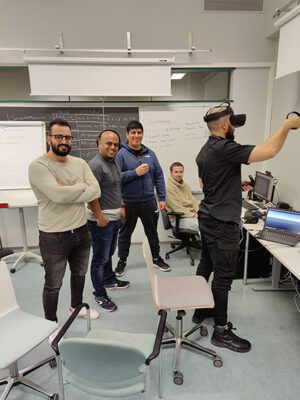
Who exactly are VAMK’d? And, how should VME create a lively XR community?
Kunal Menon is a B. Eng. Information Technology (Software Engineering) student at VAMK. He has previously worked as a Web Developer in Mumbai, India. In that role, Kunal was privileged to work with many multinational companies and advertising agencies. He faced many challenging projects from which the results and learnings were very fulfilling.
Gonzalo Araya and Mykola Zhabko are also students at VAMK. They think it would be super to share more information about VME at the first year VAMK introduction courses. Bogdan Rudnevskyii is a young IT engineer. Bogan enjoys studying a broad range of subjects and has the ambition of hacking all his profession-related fields. He believes that the first thing to do regarding building an active XR community at VME is to inform students directly about the space, equipment and activities that they can get involved in. There should also be lively communication with tutors and teachers as well as plenty of “open doors” lessons for everyone to engage in. The amazing assortment of Apps developed at VME should also be exhibited and demoed and a range of venues including the student cafeterias.
Aldulaimi Ali is also an IT student at VAMK. He is an accomplished embedded systems designer and programmer, who enjoys using his skills to contribute to the exciting technological advances that happen every day. Aldulaimi managed to implement his studies at the NASA Space Apps Hackathon where the team was selected as the Global Nominee from Vaasa, Finland. Overall, he found the XR Ocean hackathon to be extremely advantageous. It made him explore new technologies and gain more ideas in VR industry and game development. His role was to design a user interface to present a theory of bee cycle life. Their team faced many challenges that ranged from the set-up of work stations and license activation to learning how Unity works and which technologies to use. VAMK’d managed to conquer these challenges over the two day hackathon by collaboration, sharing ideas and testing alternative solutions.
See more about VAMK’d’s story at: https://sites.uwasa.fi/vmeenvironment/en/2022/12/01/xr-ocean-hackathon/
References
Kleijn, D., Winfree, I., Bartomeus, L., Carvalheiro, M., Henry, R., Isaacs, A-M., Klein, C., Kremen, et al. (2015). Delivery of crop pollination services is an insufficient argument for wild pollinator conservation. Nature Communications, 6, 7414.
Patel, V., Pauli, N., Biggs, E., Barbour, L., & Boruff, B. (2021). Why bees are critical for achieving sustainable development. Ambio, 50(1), 49-59.
Potts, S., Imperatriz-Fonseca, H., Ngo, M., Aizen, J., Biesmeijer, T., Breeze, L., Dicks, L., Garibaldi, et al. (2016). Safeguarding pollinators and their values to human well-being. Nature, 540, 220-229.
